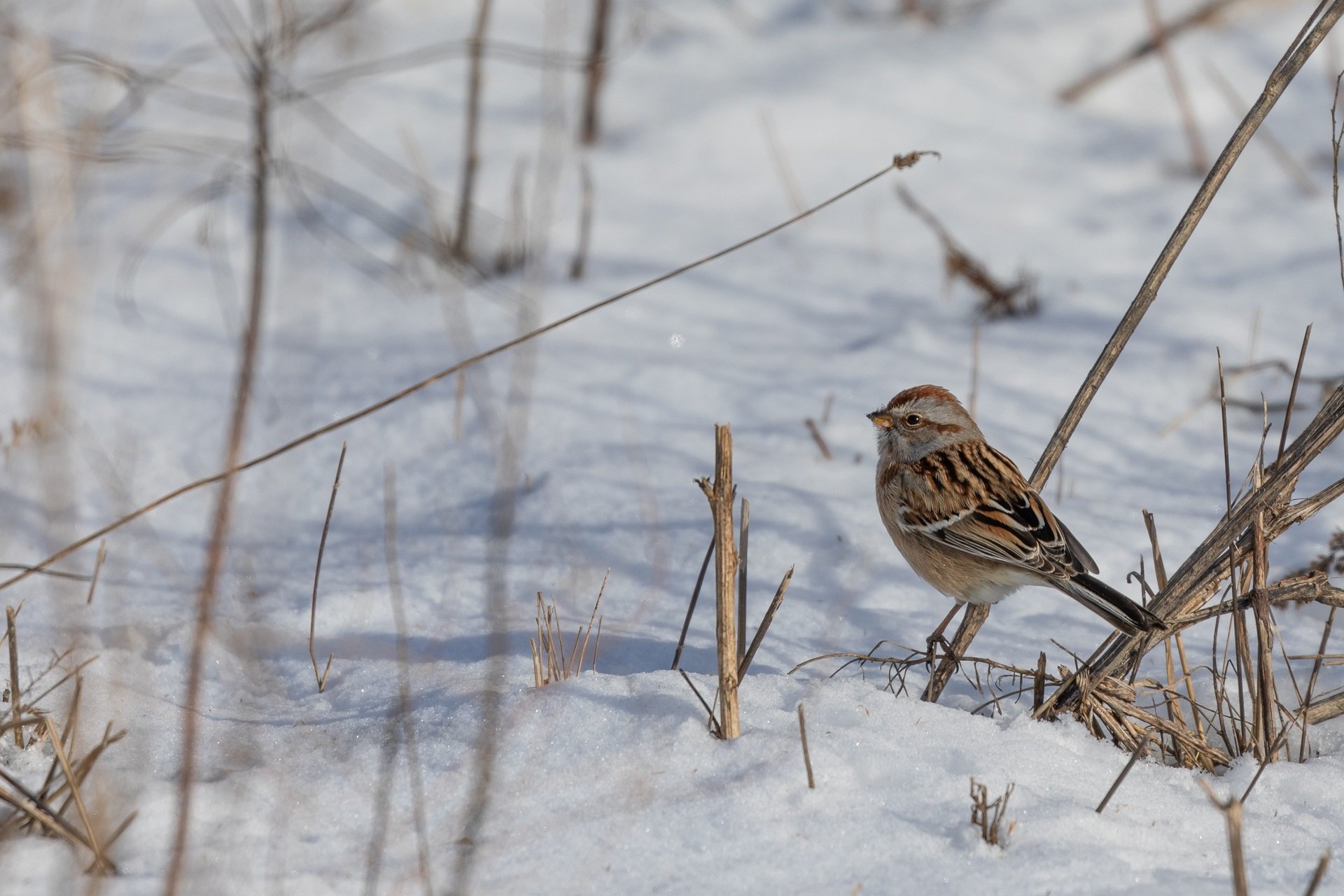Birds in Massachusetts
American Tree Sparrows
These fairly large, handsome sparrows breed in the high tundra of the Canadian north, but when winter comes they flock eagerly to weedy fields and backyard feeders across Massachusetts.
Sometimes known as “winter chippies” for their resemblance to overgrown Chipping Sparrows, American Tree Sparrows are active and sociable.
How to Identify Tree Sparrows
American Tree Sparrows are large-bodied and long-tailed, which makes them look a little larger than most other sparrows that visit feeders. Their backs are reddish brown with plenty of streaking along the edges of their feathers, but the best field marks for this species are the cap and the chest.
American Tree Sparrows have a bright chestnut cap, as well as a matching chestnut line through the eye. Their plain breasts have no streaks but often show a small smudge or spot in the center.
American Tree Sparrow Call
Tree Sparrow Behavior
Contrary to their name, American Tree Sparrows do much of their feeding on the ground, where they hop about looking for seeds. Their flocks keep up a constant exchange of high, musical two-note calls see-weep, see-weep, see-weep.
When waiting their turn at the feeder or fleeing from predators, American Tree Sparrows will perch in trees or low shrubs. They will often flutter to a seed-laden grasshead (or bird feeder) and flap their wings vigorously, trying to knock seeds to the ground.
Threats Facing Tree Sparrows
American Tree Sparrows do not breed in Massachusetts, but they are very common migrants and winter residents. Unfortunately, Christmas Bird Count data indicate that a possible decline in winter numbers may be taking place in the Bay State.
How Mass Audubon is Supporting Birds in Massachusetts
Mass Audubon works at our wildlife sanctuaries and beyond to ensure that the nature of Massachusetts continues to thrive. By scientifically monitoring Massachusetts birdlife, Mass Audubon informs important conservation decisions and launches targeted initiatives to help at-risk species. In addition, fostering healthy habitats, supporting native species, and educating people about the importance of nature conservation is critical to our success. Learn more about our work
How You Can Support Birds in Massachusetts
Mass Audubon supports birds like the American Tree Sparrow every day, but we couldn’t do it without the support of our 160,000+ members.
Help support American Tree Sparrows, and birds like them, by becoming a member today.
Upcoming Bird Programs
See MoreFriday Morning Birdwatching - Cape Ann
-
Cape Ann, Rockport
-
Friday, December 19
8:30-11:30am
Adults
Birding 101
-
Moose Hill Wildlife Sanctuary, Sharon
-
Friday, December 19
9:30-11:00am
Adults
Birds Beyond Identification - Owls
-
North River Wildlife Sanctuary, Marshfield
-
Friday, December 19
10:00am-12:00pm
Adults
Stay Connected
Don't miss a beat on all the ways you can get outdoors, celebrate nature, and get involved.



